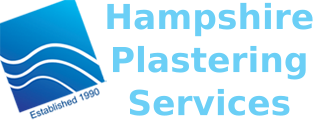How to Do Accounting for a Small Business: Your Quick-Start Guide Bench Accounting
When creating an invoice, the software automatically creates the journal entry and maps it to the relevant accounts (accounts receivable, sales, etc.). Finally, if you are using Shopify, you can simply use Shopify Payments to receive credit card payments. Depending on your Shopify plan, you’ll have to pay between 2.4% and 2.9% in fees for receiving credit card payments. In North America for example, the preferred payment method is credit cards – with around 34% of payments being carried out with a credit card. Funnily enough, though, a lot of business owners think that using a checkbook is still an efficient way to manage their company’s accounting in 2021. The part of the cash flow statement that deals with direct and indirect cash flows is the operating activities one.
In-person payments
The major reports to include are the profit and loss, the balance sheet, and a cash flow analysis. Additionally, the aged accounts receivables and aged accounts payables reports are helpful in knowing which customers have not paid and which vendors are yet to be paid. These reports will help you gain greater insights into the financial health of your small business. The cash basis is easier to use, but the accrual method of recording transactions gives you a clearer picture of actual revenue and expenses during a particular period. Most small businesses that don’t carry inventory choose the cash basis. Large and inventory-heavy businesses may need to use the accrual method.
Learn how to build, read, and use financial statements for your business so you can make more informed decisions. The magic happens when our intuitive software and real, human support come together. Book a demo today to see what running your business is like with Bench. These are the 10 steps you need to follow in order to successfully do accounting for your small business. Below, you’ll find some frequently asked questions that small business owners have when it comes to accounting. The main difference between the two is that single-entry bookkeeping only requires writing down a single entry for each business transaction you perform.
How do you keep accounting records for a small business?
You can then compare different programs to evaluate the range of features and benefits that are included, and the overall cost of using it. The IRS encourages small business owners to maintain proper documentation for expenses, such as receipts showing the amount spent, the date, the payment method, and what was purchased. The accounting method you choose has a huge impact on your business, so we highly recommend you talk to your small-business accountant, CPA, or bookkeeper about which method works best for you. With that caveat in mind, here’s a quick overview of the two types—and which type certain businesses are legally required to use. Consulting part-time with a small-business bookkeeper or accountant can work nicely for newer, smaller businesses. But once your business is big enough that you can’t (or simply don’t want to) wrangle finances by yourself, it’s probably time to get a bookkeeper or CPA on your payroll.
- Do you have more questions about the bookkeeping process for small businesses?
- This is a necessary chore that helps small business owners track and manage their money effectively – especially during the early stages.
- This method does not recognize accounts receivable or accounts payable.
- Open a business bank account and business credit card and run all your business’s income and expenses through those accounts rather than your personal checking account or credit card.
Double-entry bookkeeping, on the other hand, contains two entries for each transaction, and two accounts are used. For starters, it will be a lot simpler for you to the difference between gross sales and net sales keep track of how well your business is doing. And you’ll also save yourself a ton of time and nerves for when the time to file taxes comes. The first step after you’ve incorporated your business should be to open a business bank account. And similarly to the cash flow statement, most small businesses won’t ever need to use a statement of retained earnings. Large publicly traded corporations generally rely on this financial statement to decide on things like dividends disbursements, company valuation, etc.
See Bench’s features in action
Most reputable accounting software can streamline the accounting process by connecting to your bank account to ensure your financial statements reflect every transaction. Open a business bank account and business credit card and run all your business’s income and expenses through those accounts rather than your personal checking account or credit card. A separate bank account makes it much easier to have a clean record of business transactions.
If your business chooses to keep this task in-house, it’s best to stick to a predictable expense tracking schedule. Developing a bookkeeping routine prevents you from accidentally forgetting important steps in the accounting process. Mobile card readers like Square are handy for taking payments while you’re on the go.
You may also need a minimum opening deposit if the bank requires one. Minimum deposit requirements can depend on the type of business account and whether you’re opening the account at a traditional bank, credit union, or online bank. Based on the nature of your business, you might decide to offer credit to customers. Instead of collecting payments at the point of sale, you may choose to invoice them at a later date.
Accounting means not just keeping financial records but also analyzing and interpreting financial data so you can make wise fiscal decisions. The key is to ensure every transaction is recorded correctly and in the right account. On the other hand, online accounting software like Quickbooks lacks some very basic features like dropship management, advanced inventory management, bill of materials, multiple warehouse management, etc.
